In September 2021 Angela Merkel, the German Chancellor, is due to stand down from her post when the country goes to the polls to elect a new government. Her terms as head of state will be just short of that of her predecessor and mentor, Helmut Kohl, who oversaw the reunification of Germany and held the office for 16 years and 26 days.
During her period as Germany’s leader the country, and in many ways the entire European Union, has changed dramatically. From her early roles as General Secretary of the Christian Democratic Union (CDU) in the late 1990s and Chairperson of the party in the early 2000s, she rose through the ranks to become the most powerful woman in the world, overseeing countless challenging situations facing Europe.
Born in Hamburg in West Germany in 1954, she moved to East Germany with her parents as an infant and only became active in politics around the time of the decline, and later collapse, of the East German state in 1989. Since 2005 she has served as German chancellor in four coalition governments and in times of upheaval, has been the EU’s de facto leader, setting the tone during the Eurozone crisis of 2008 and the migrant crisis of 2015.
Able to speak to communicate with a vast array of heads of state – from Vladimir Putin and Recep Tayyip Erdogan to Donald Trump and Xi Jinping – Merkel’s moderation and sensibility has given Germany an oversized role in international politics. The country’s next leader has very large shoes to fill.
Panos photographer Stefan Boness has been photographing Angela Merkel since the early 2000s and has accumulated a unique archive of images showing her throughout the ups and downs of the past 20 years. To see the full set of images, please get in touch. Below a selection of images from the past two decades.
2000
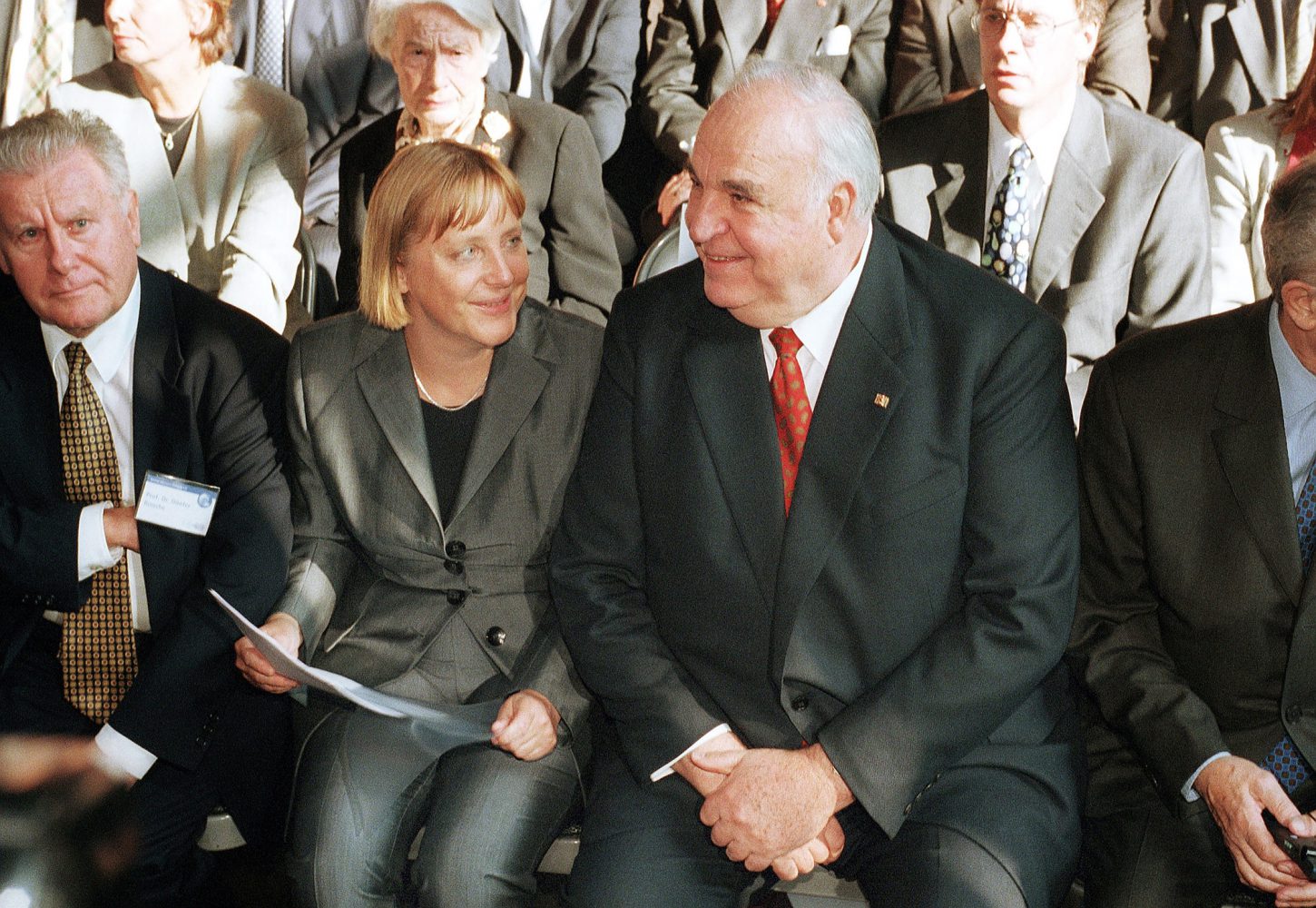 With Helmut Kohl, her predecessor, in Berlin, 2000.
With Helmut Kohl, her predecessor, in Berlin, 2000.
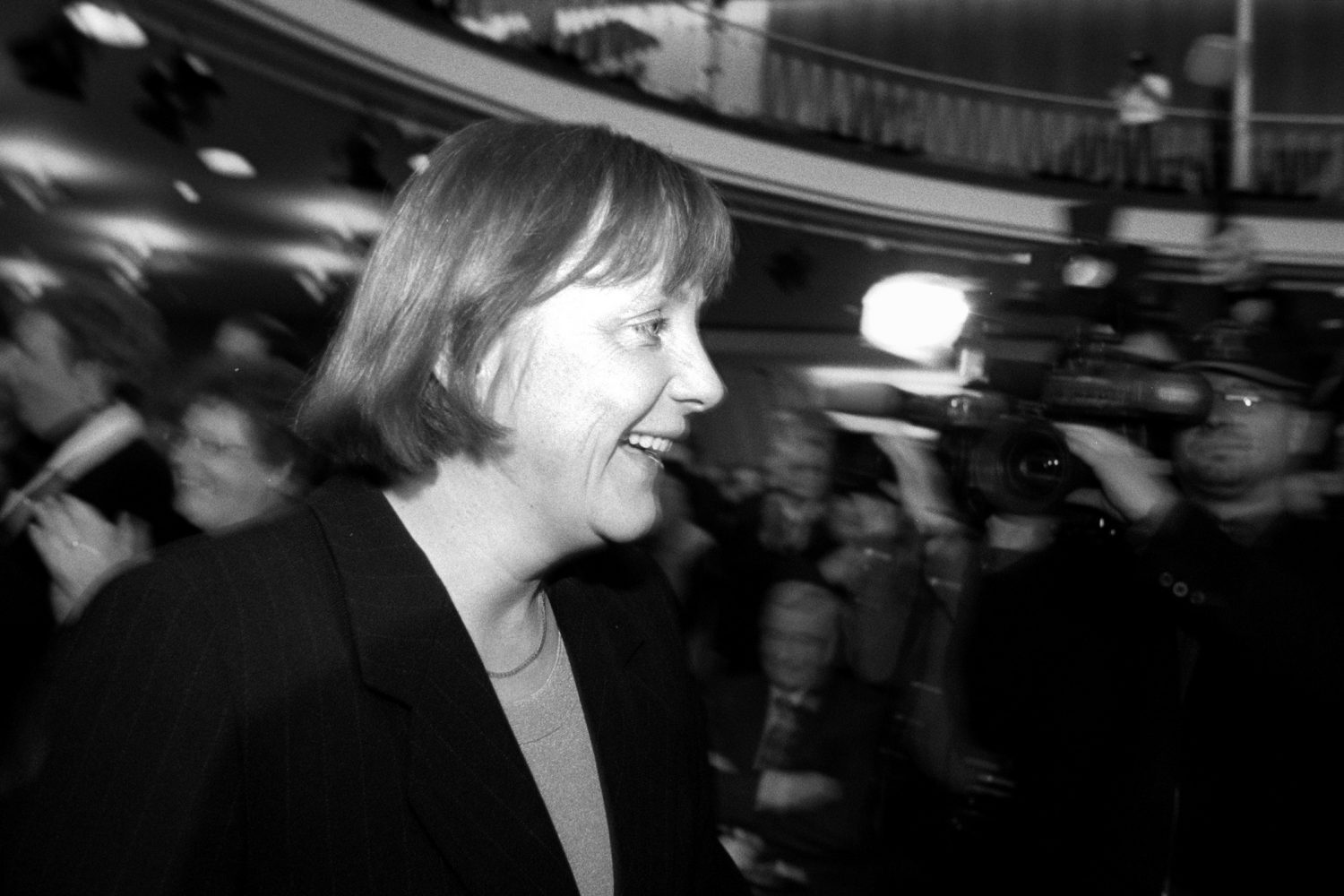 At a party congress as general secretary, 2000.
At a party congress as general secretary, 2000.
First term, 2005 – 2009
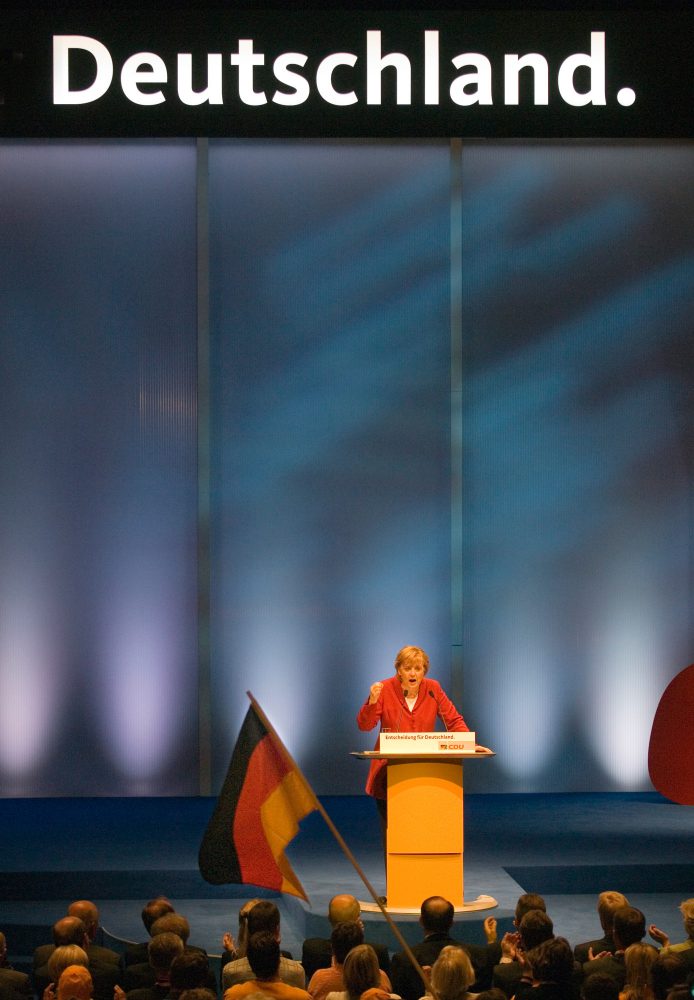 As party chairperson at an election rally, 2005.
As party chairperson at an election rally, 2005.
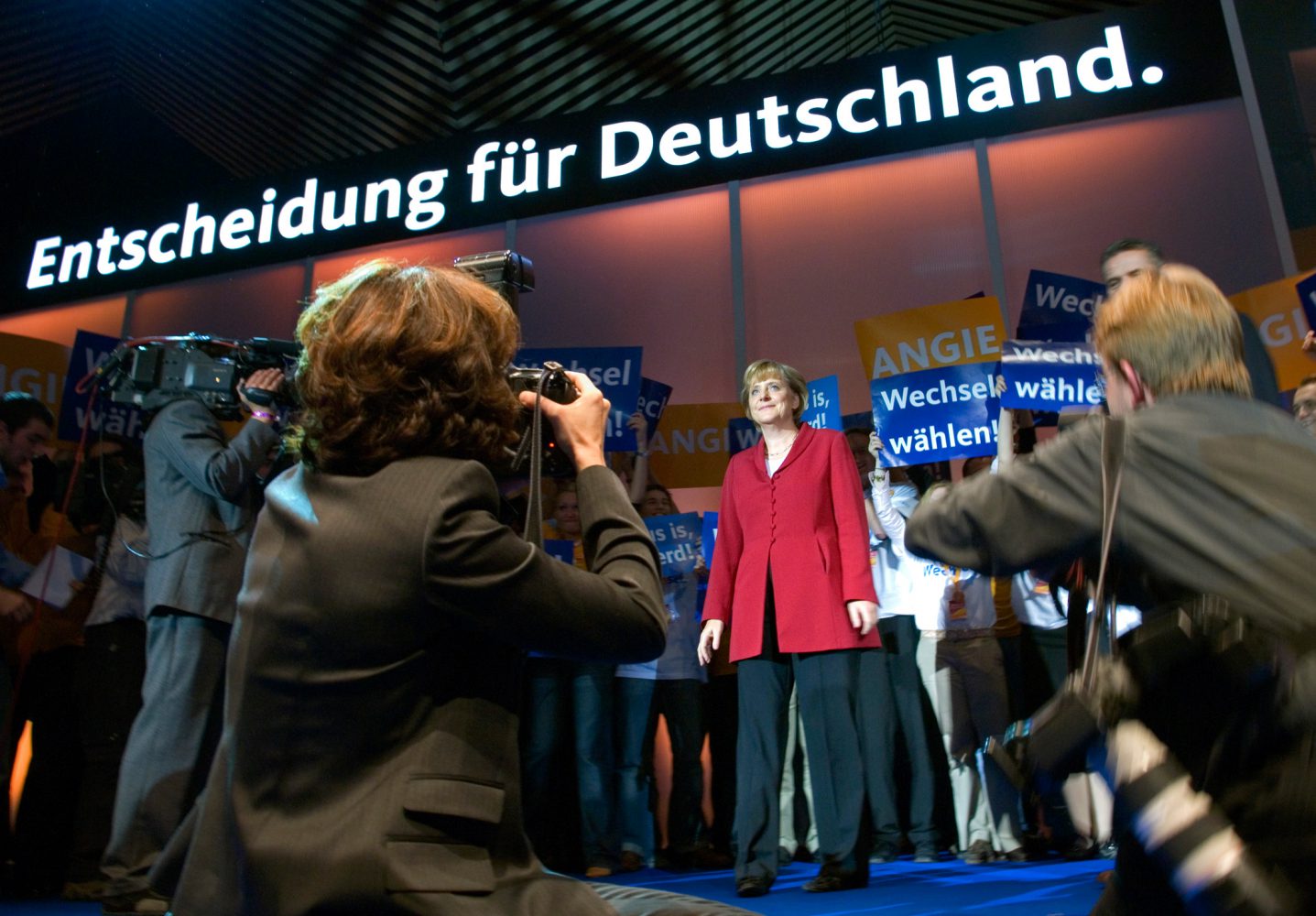 As party chairperson at an election rally, 2005.
As party chairperson at an election rally, 2005.
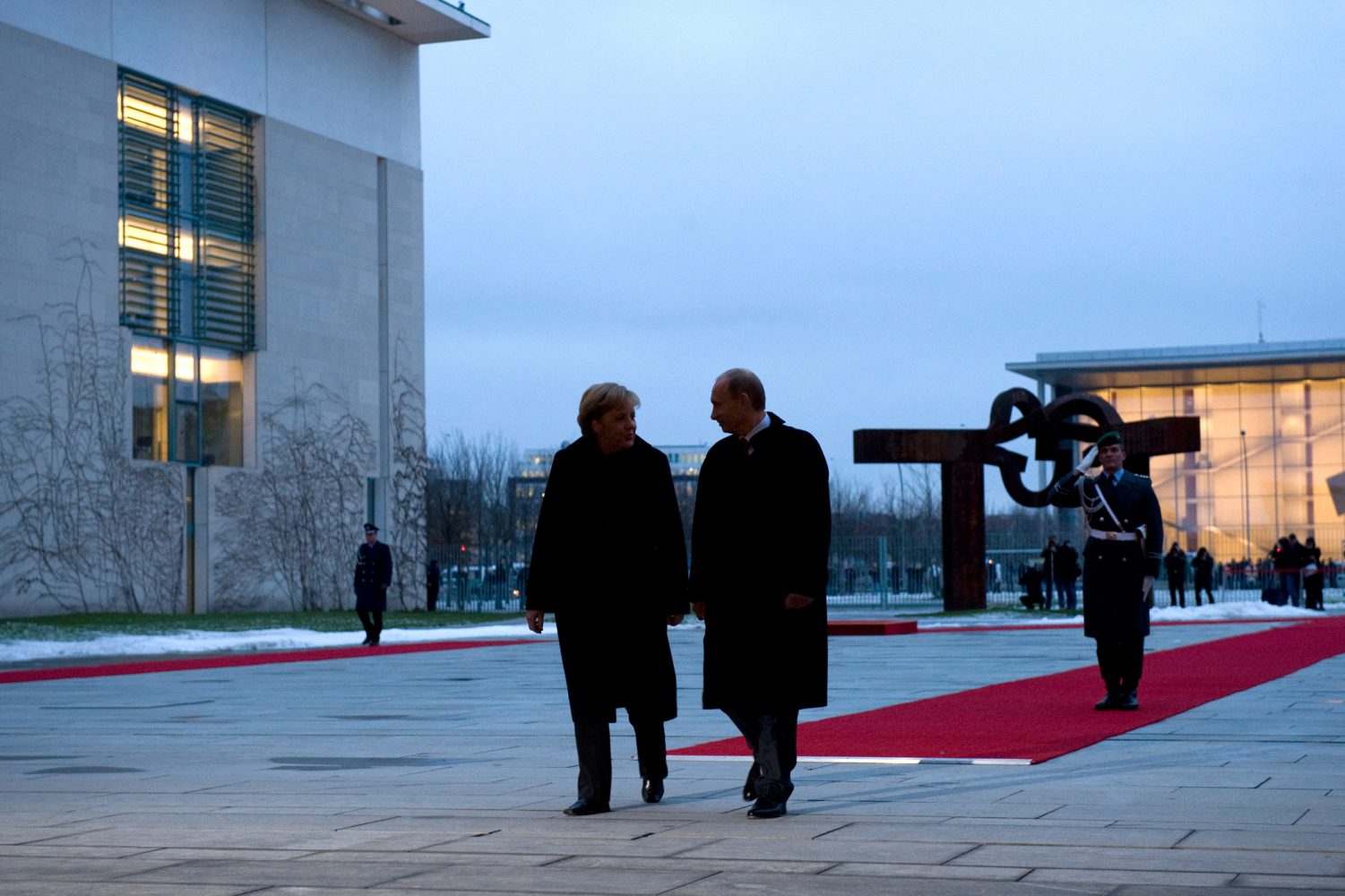 With Vladimir Putin in Berlin, 2009.
With Vladimir Putin in Berlin, 2009.
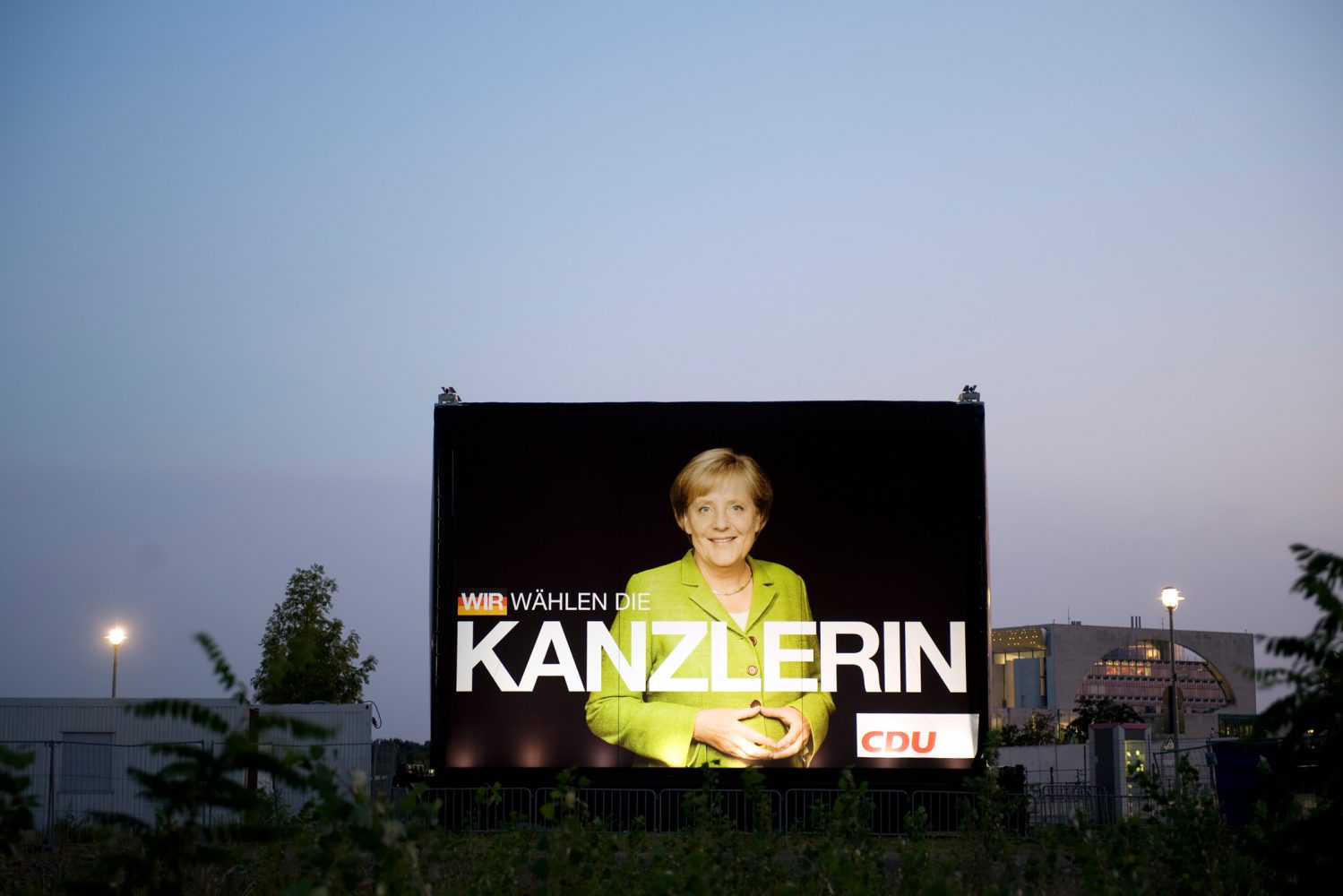 Election poster, 2009.
Election poster, 2009.
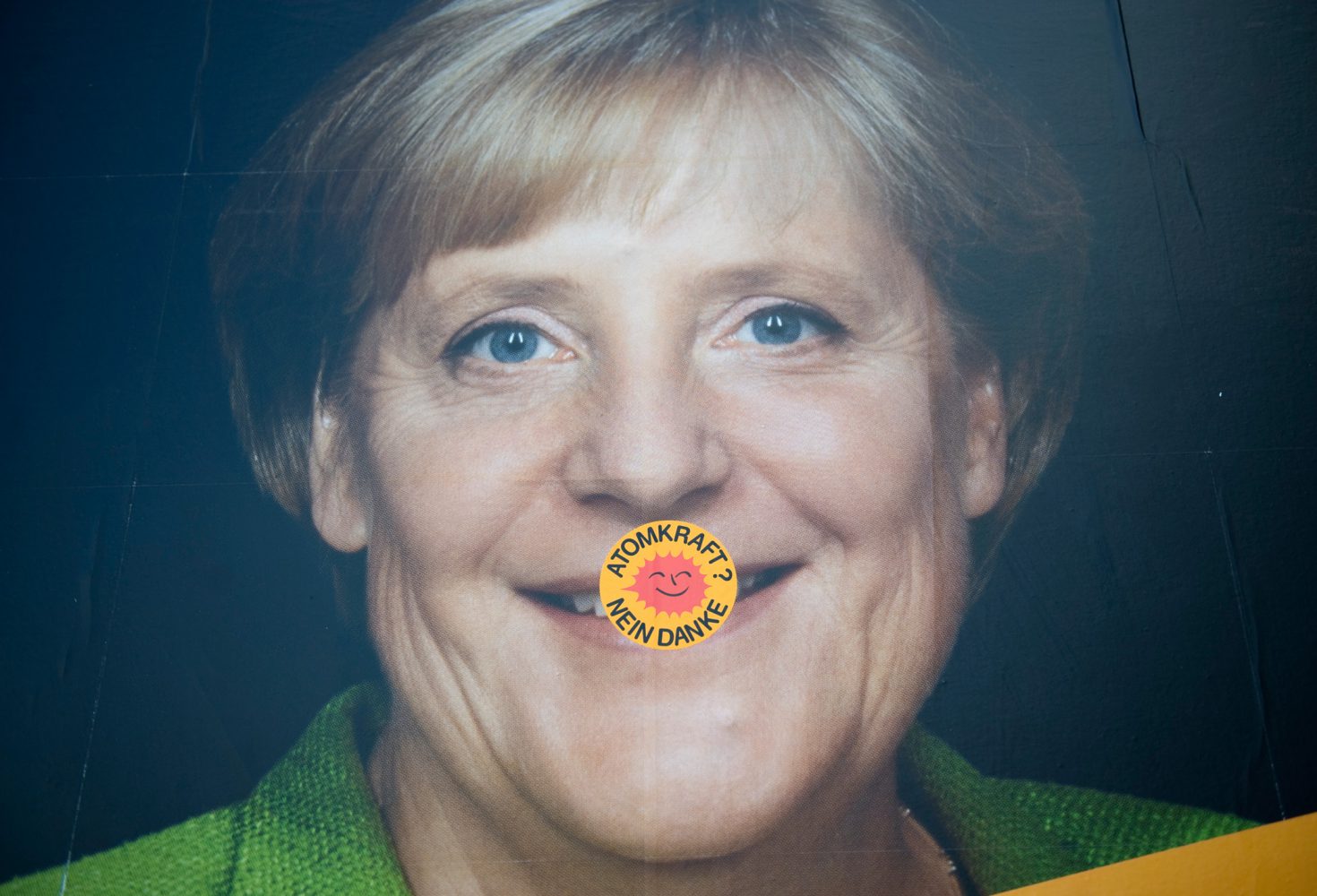 Election poster 2009 with a “Atomic Energy,No Thanks” sticker.
Election poster 2009 with a “Atomic Energy,No Thanks” sticker.
Second term, 2009 – 2013
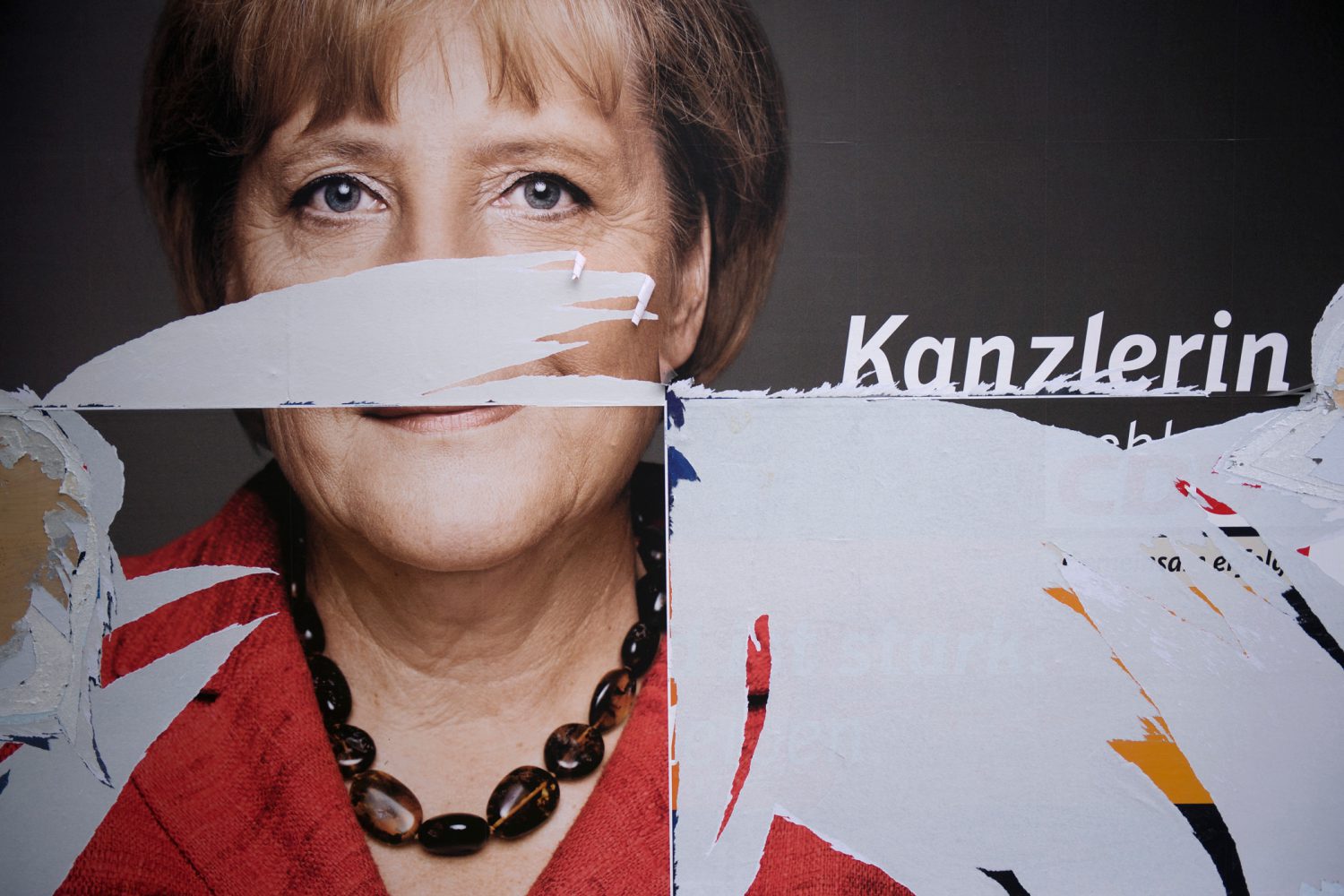 A defaced election poster in 2013.
A defaced election poster in 2013.
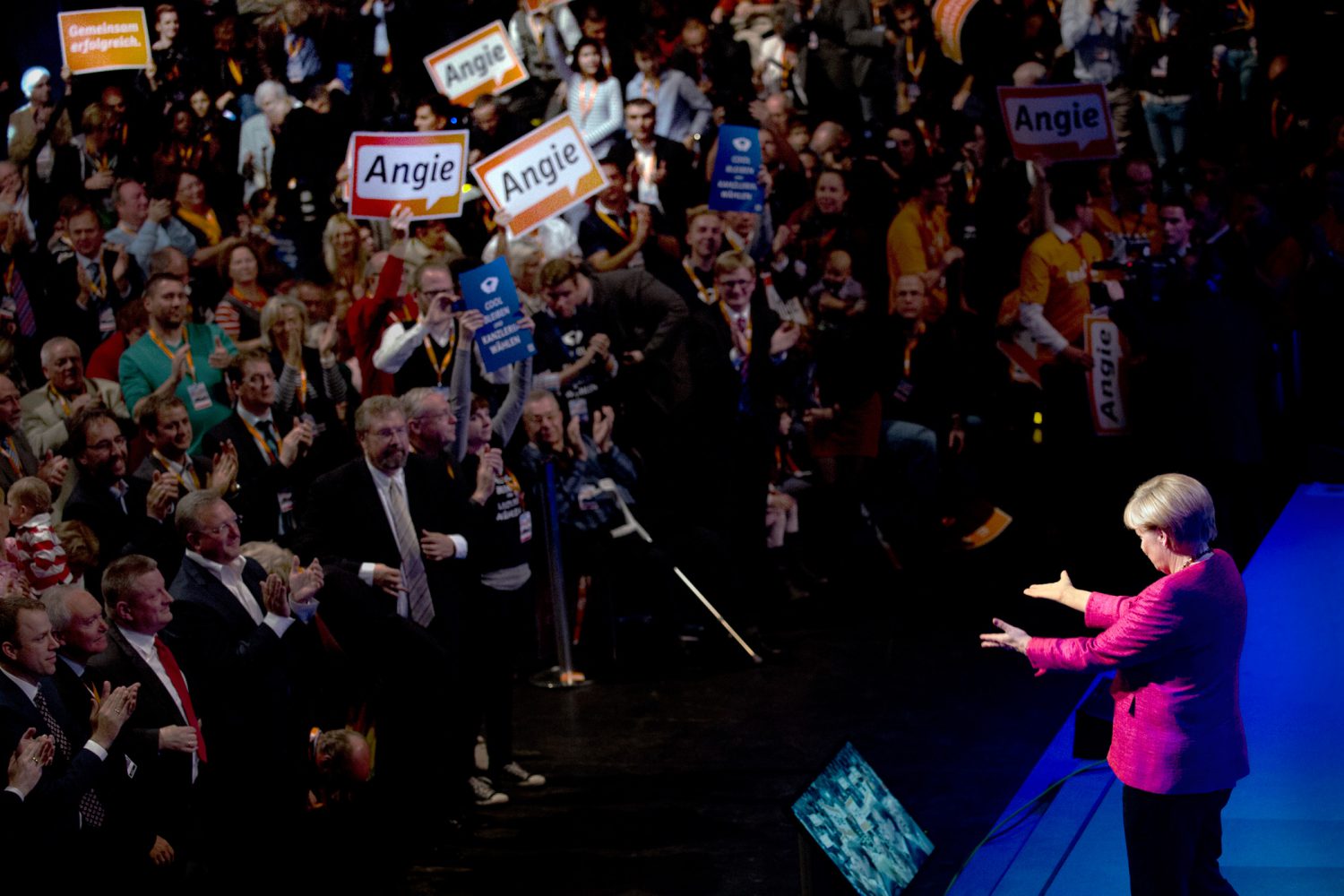 An election rally in 2013.
An election rally in 2013.
 A stylised image of Merkel’s signature hand gesture on an election poster, 2013.
A stylised image of Merkel’s signature hand gesture on an election poster, 2013.
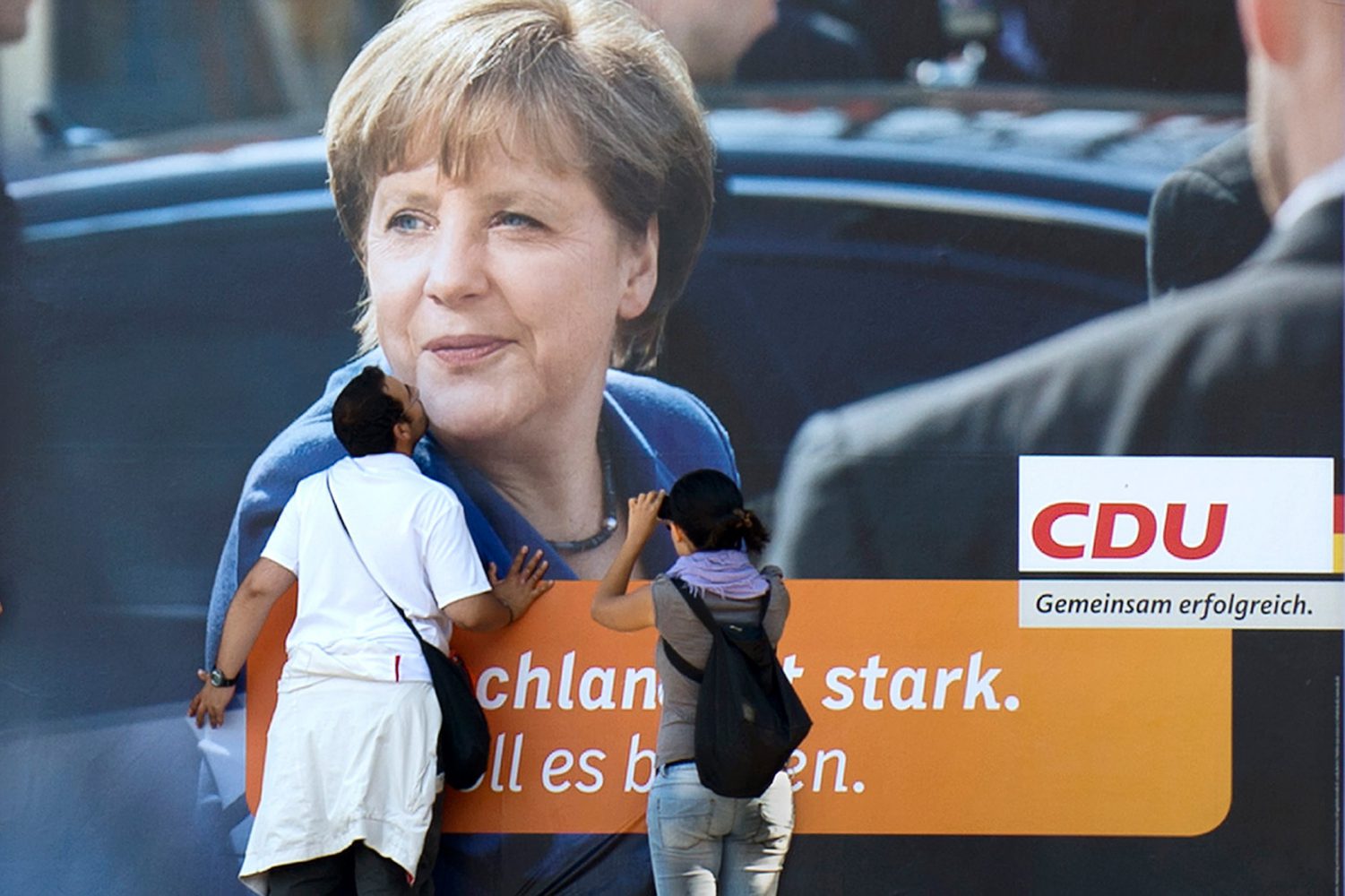 A Merkel enthusiast kisses and election poster in 2013.
A Merkel enthusiast kisses and election poster in 2013.
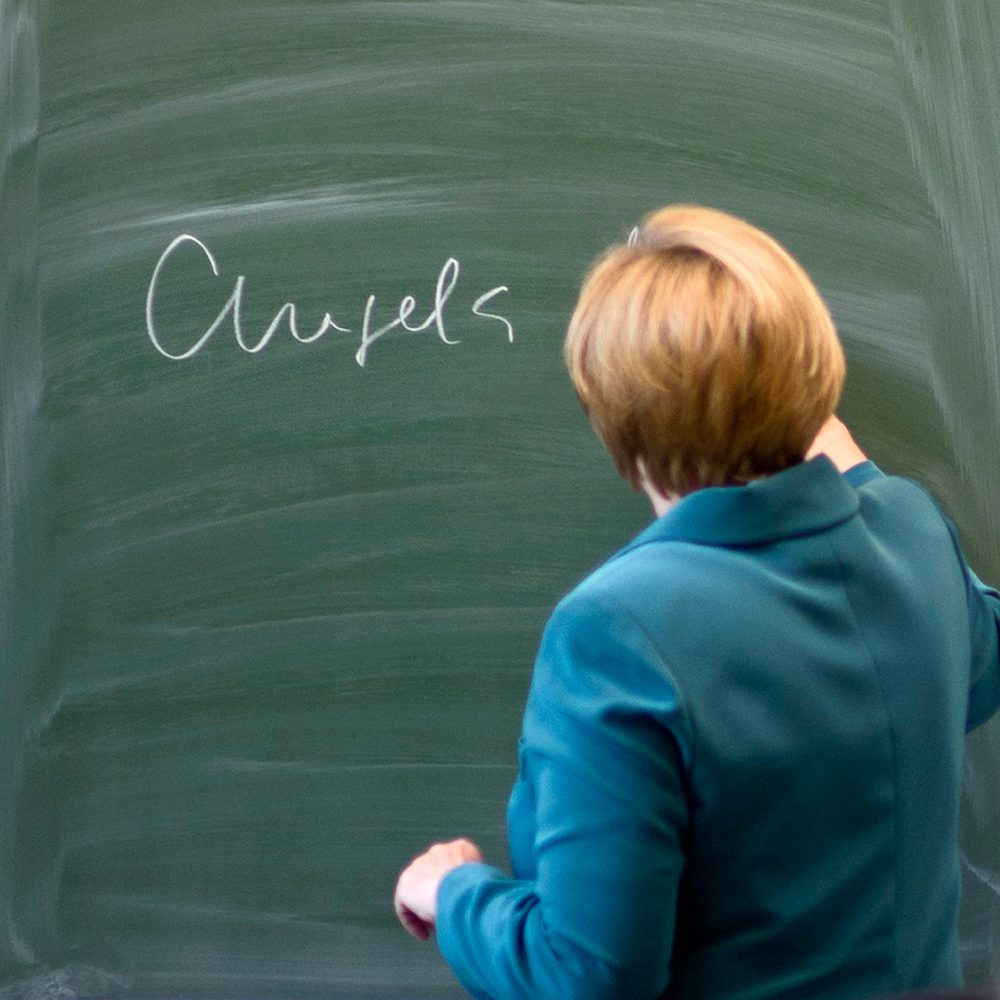 Visiting a secondary school in 2013 in Berlin.
Visiting a secondary school in 2013 in Berlin.
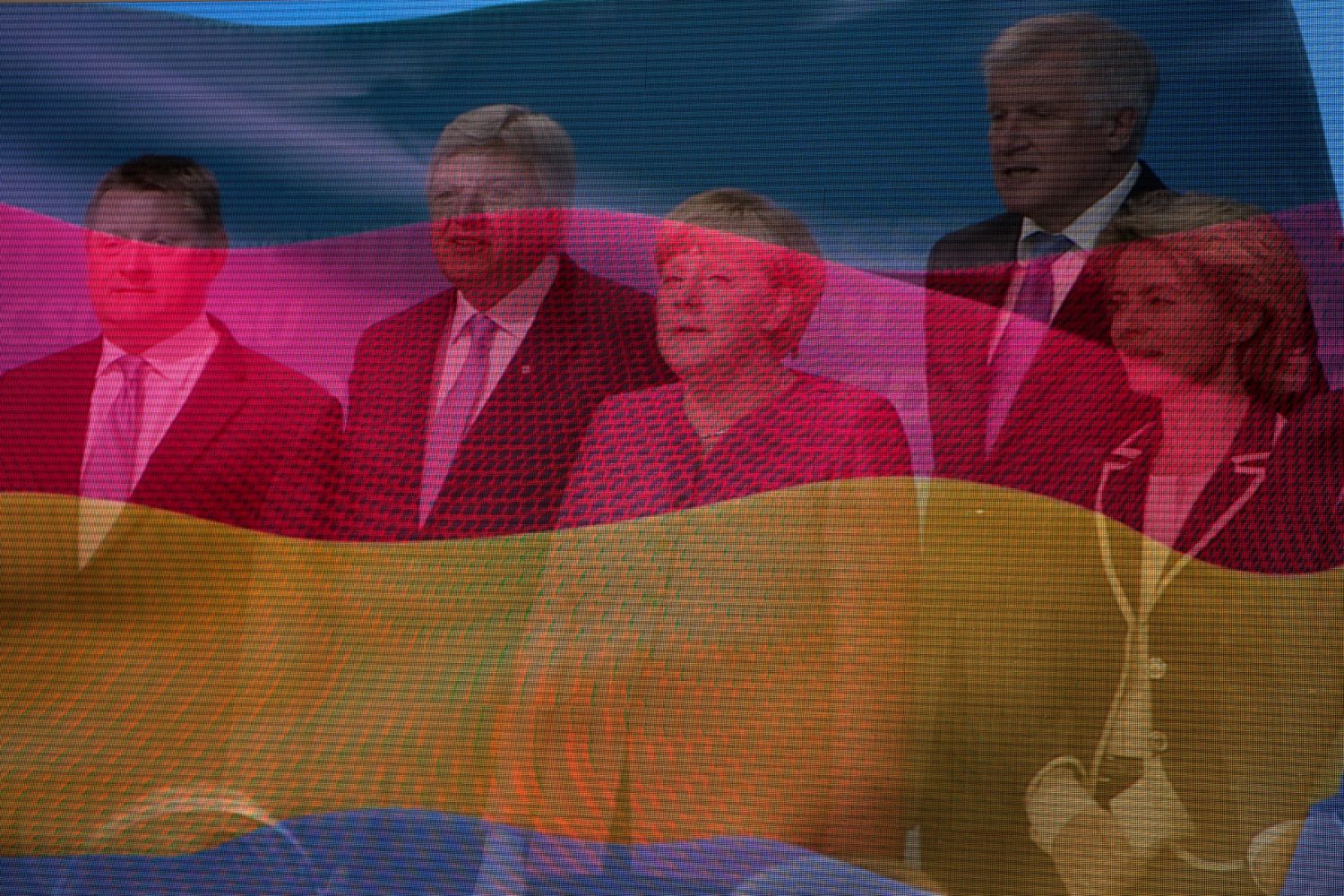 With CDU and CSU dignitaries at a party congress in 2013.
With CDU and CSU dignitaries at a party congress in 2013.
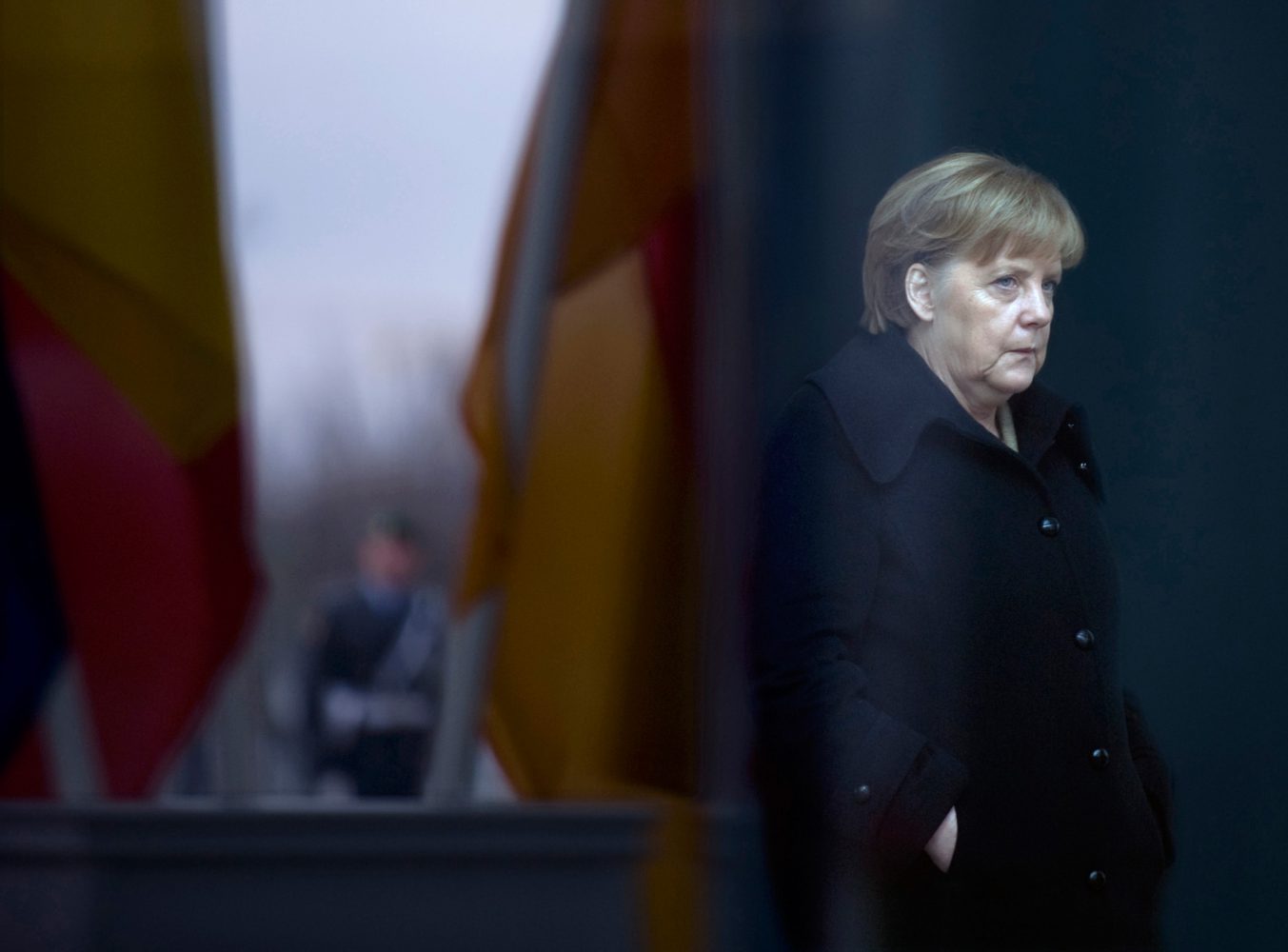 Angela Merkel waits for a visiting dignitary during a state visit, 2012.
Angela Merkel waits for a visiting dignitary during a state visit, 2012.
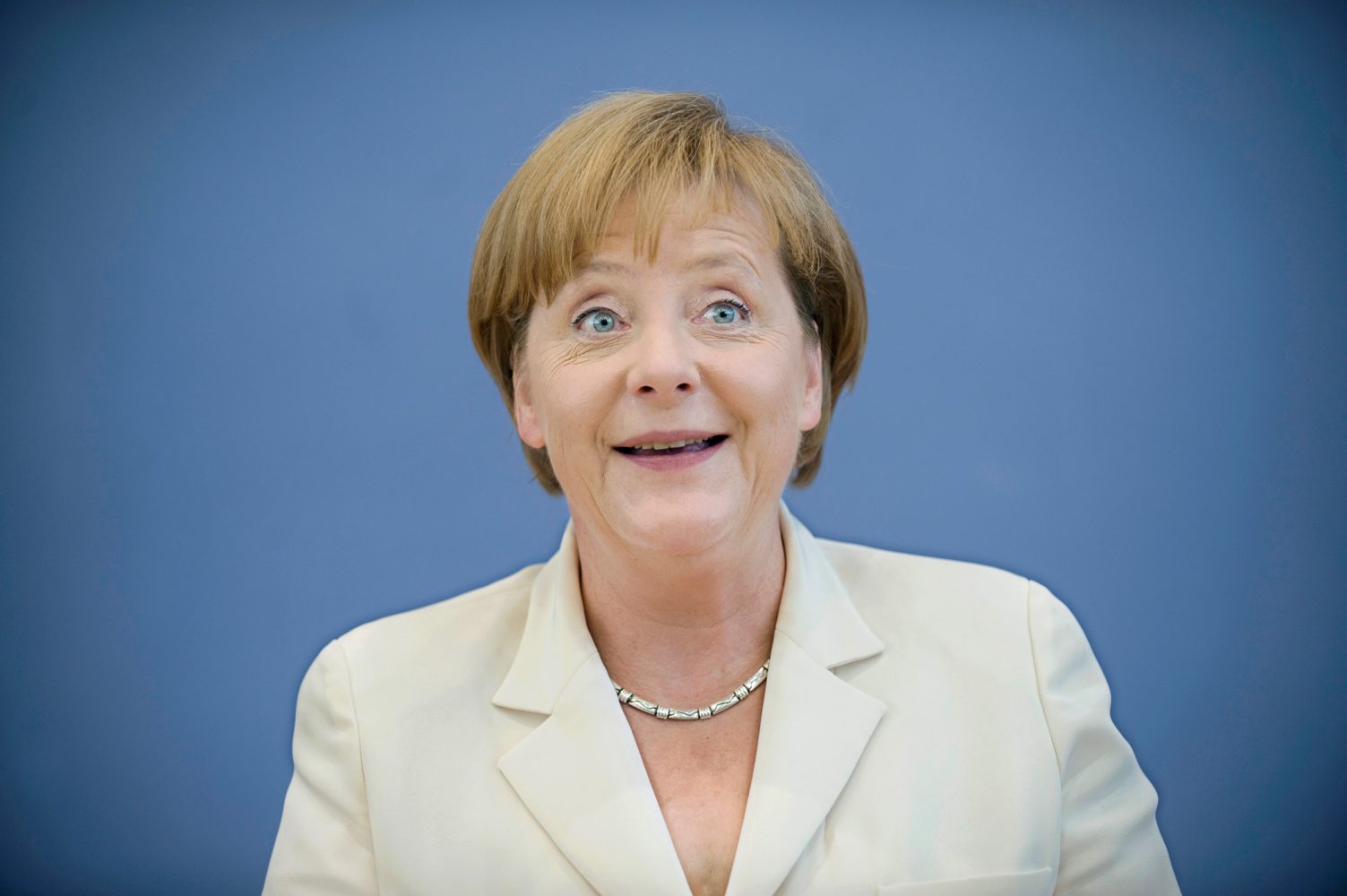 Chancellor Merkel – a lighthearted moment.
Chancellor Merkel – a lighthearted moment.
Third Term, 2013 – 2017
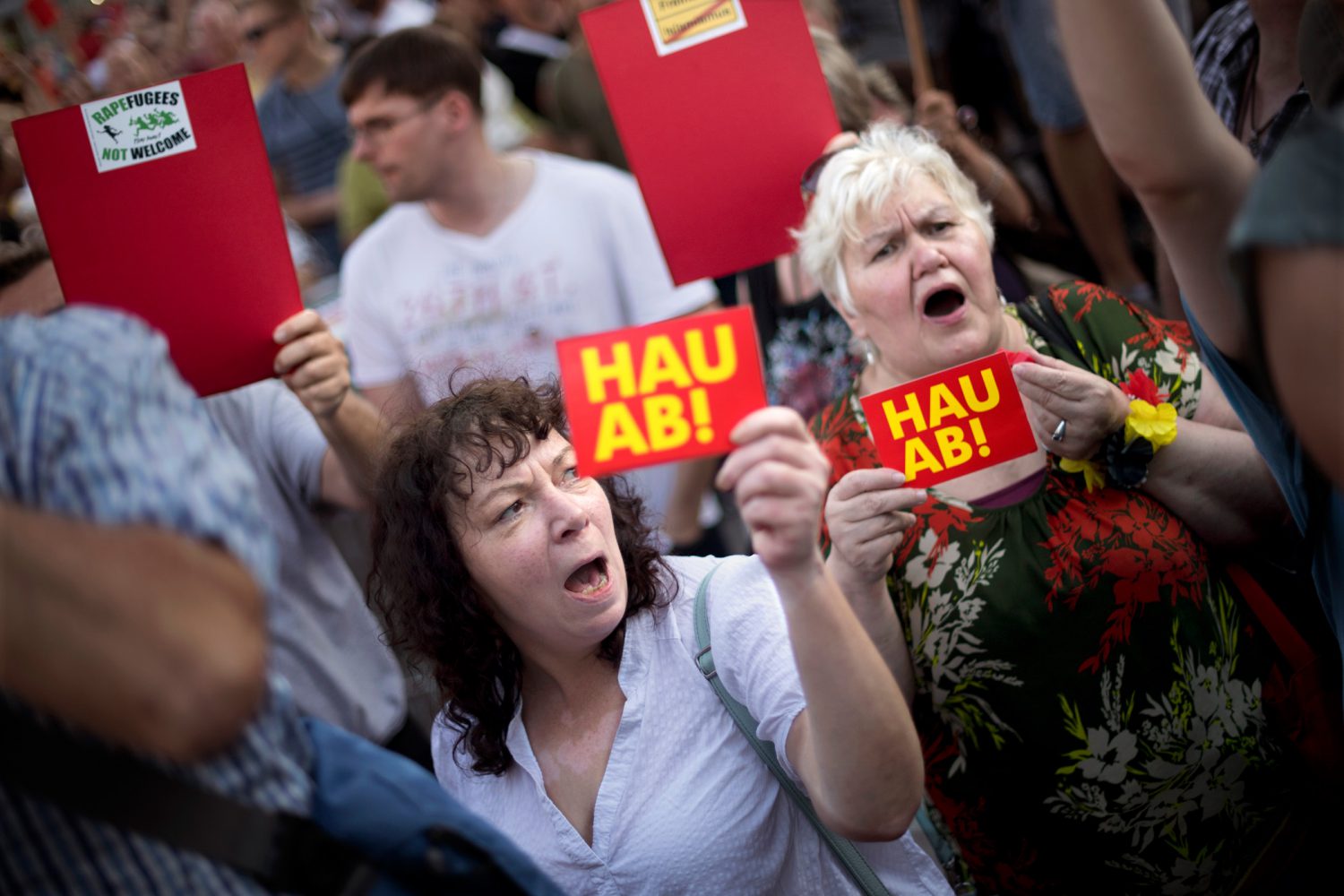 Anti-Merkel demonstrators during a regional election in Brandenburg, 2017.
Anti-Merkel demonstrators during a regional election in Brandenburg, 2017.
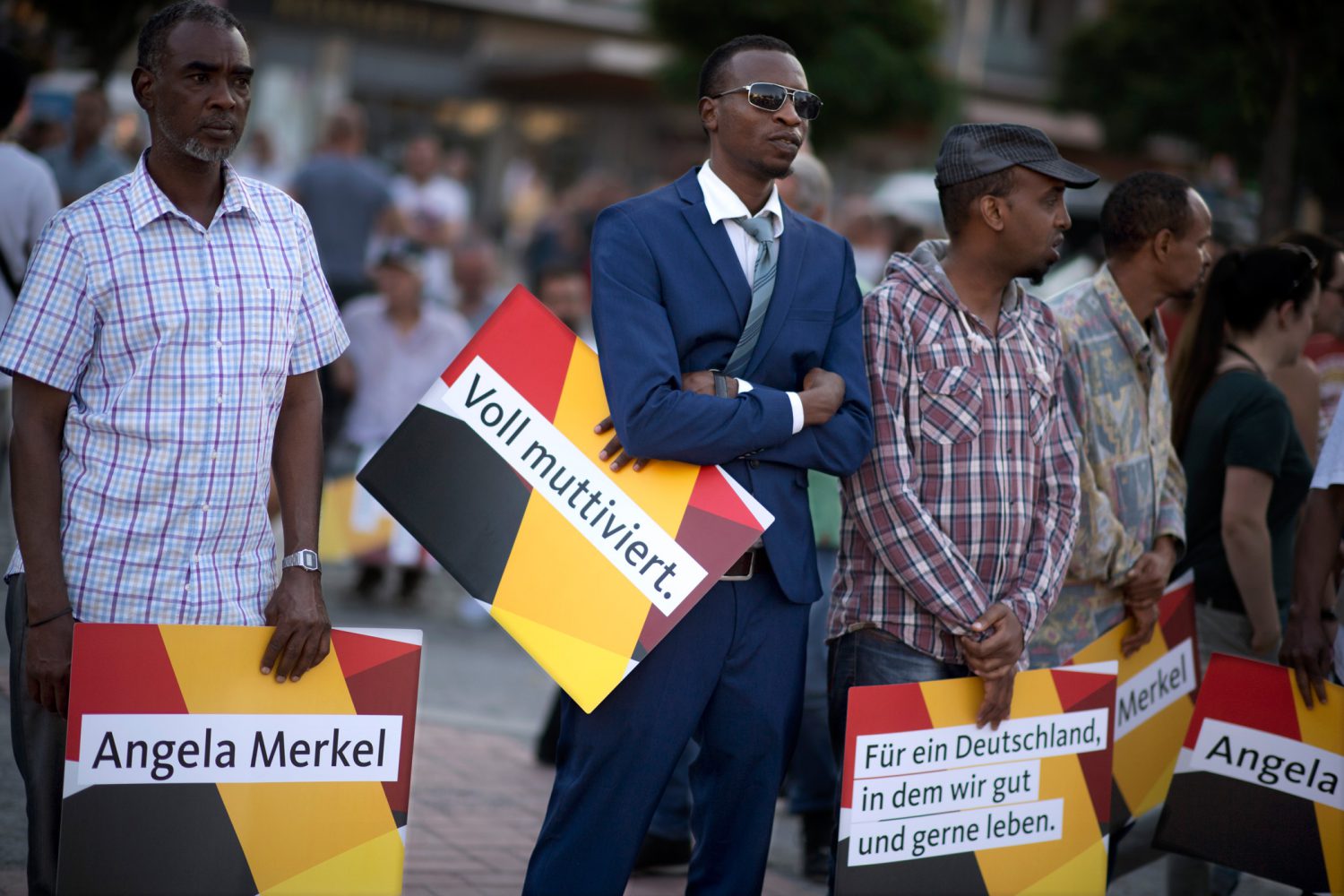 Migrants from Sudan showing their support, 2017.
Migrants from Sudan showing their support, 2017.
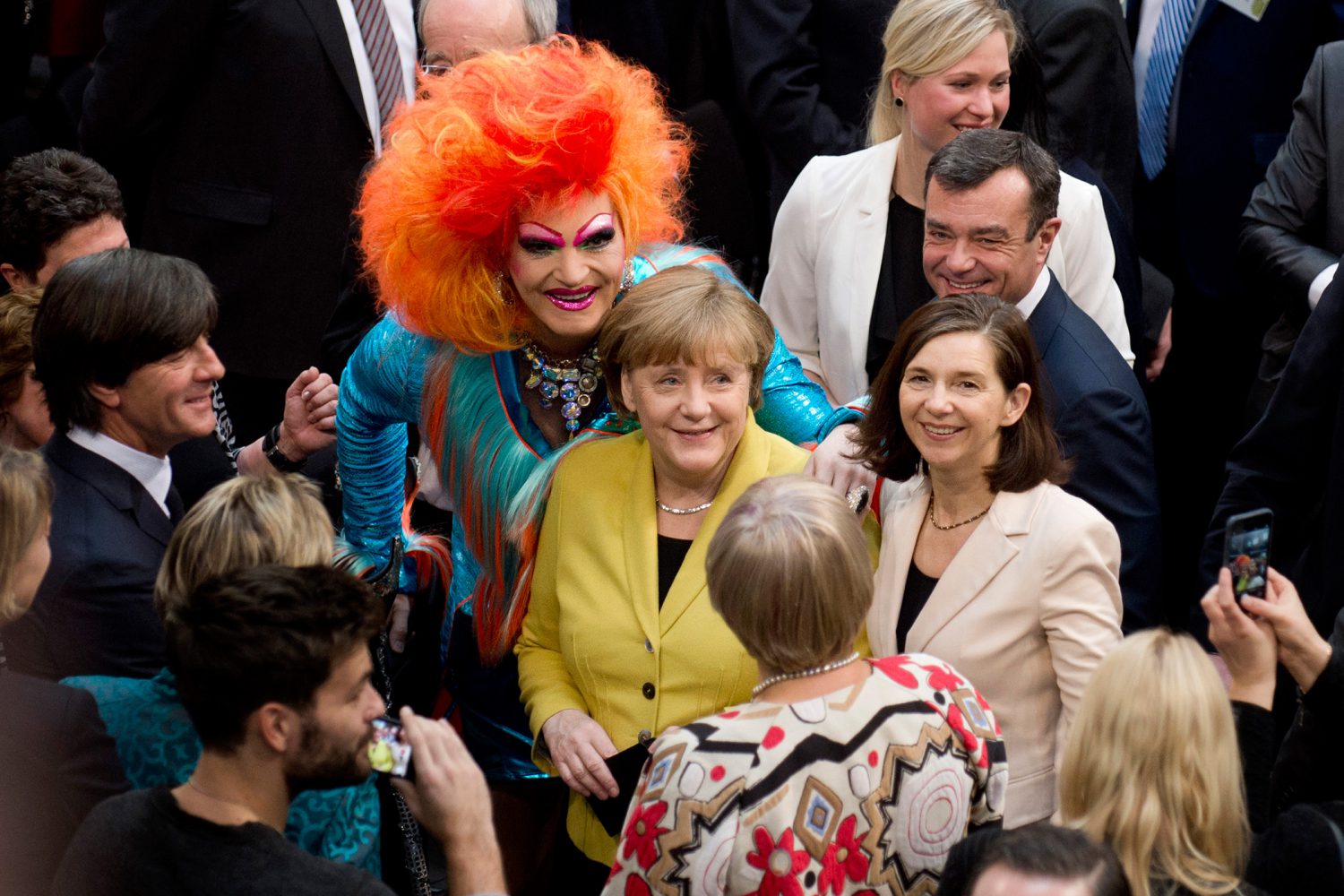 Surrounded by the great and good, 2017.
Surrounded by the great and good, 2017.
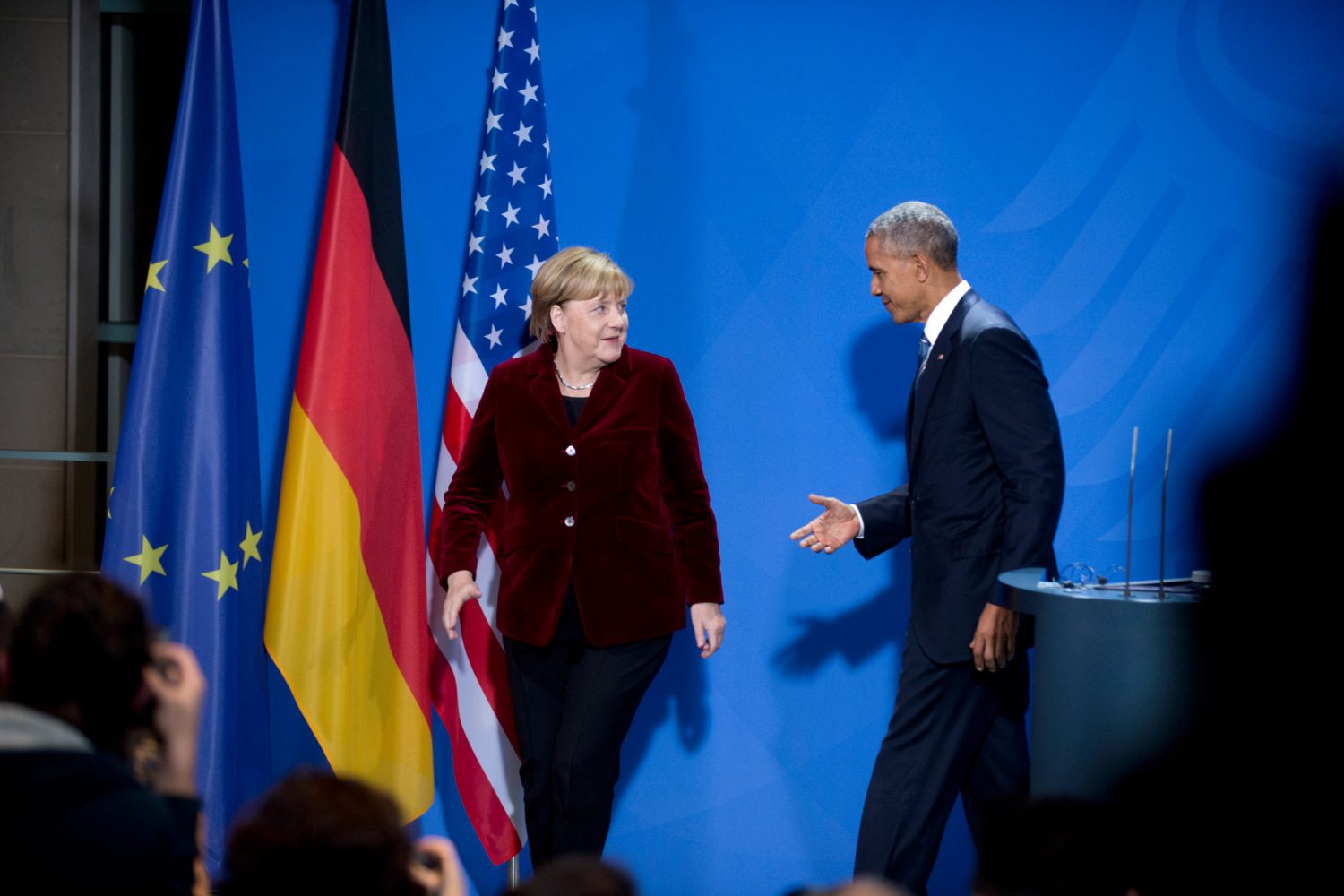 With Barack Obama, 2016.
With Barack Obama, 2016.
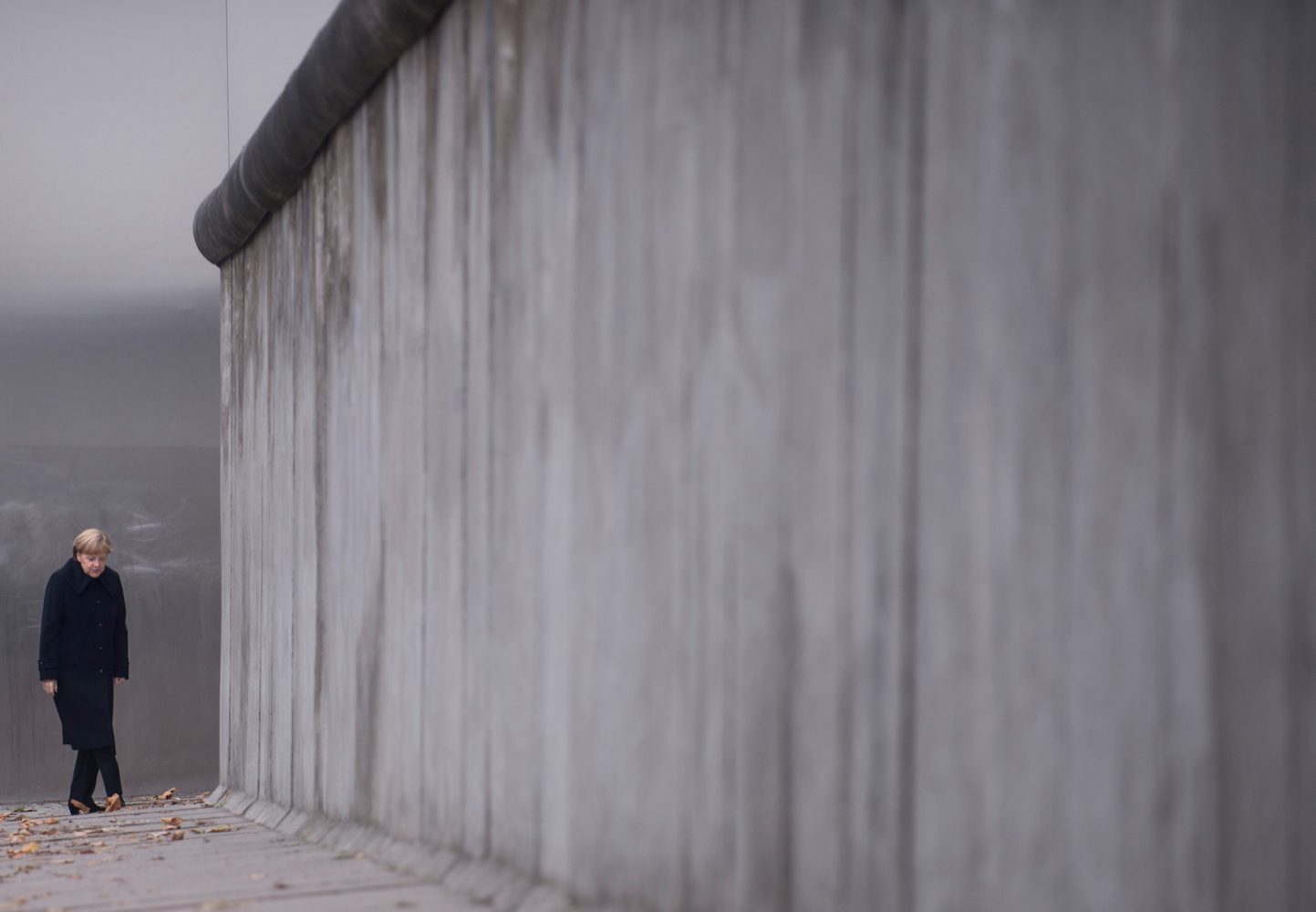 Visiting a section of the old Berlin Wall, 2014.
Visiting a section of the old Berlin Wall, 2014.
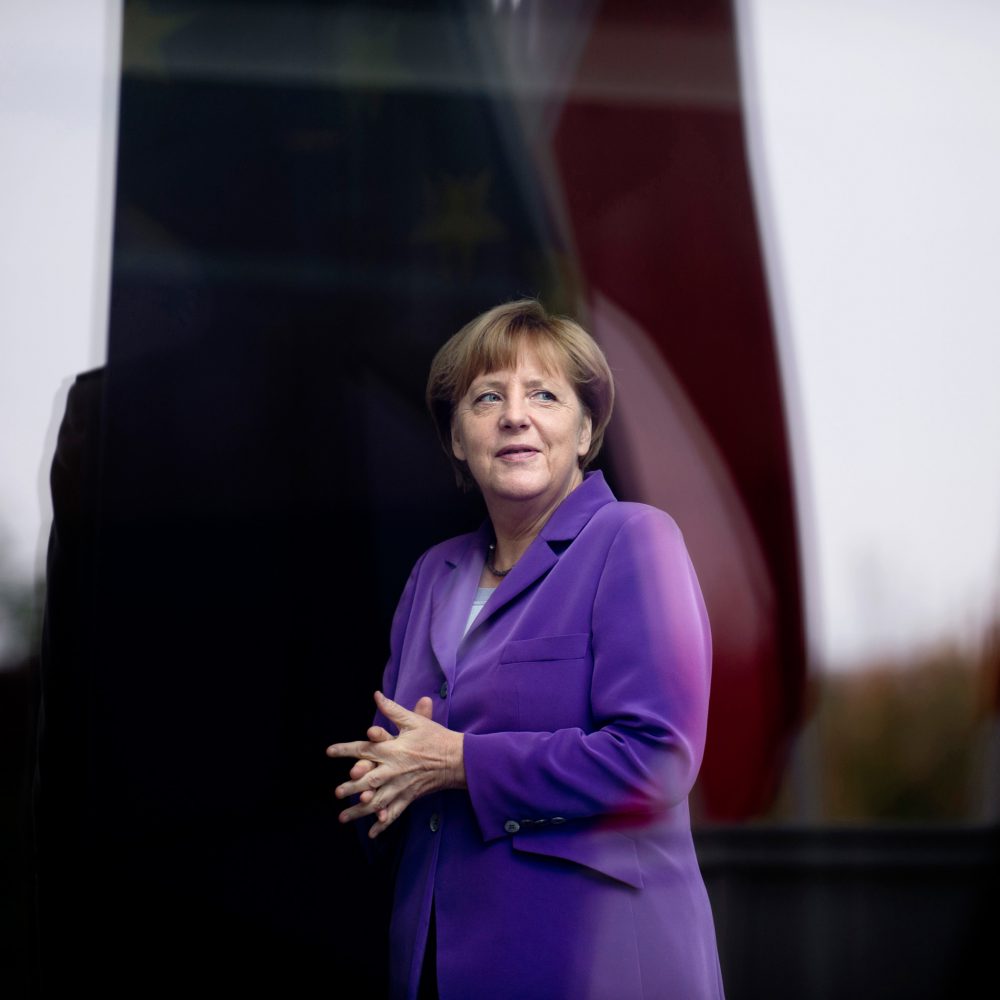 Waiting for the Polish Prime Minister, 2014.
Waiting for the Polish Prime Minister, 2014.
2018 to the present
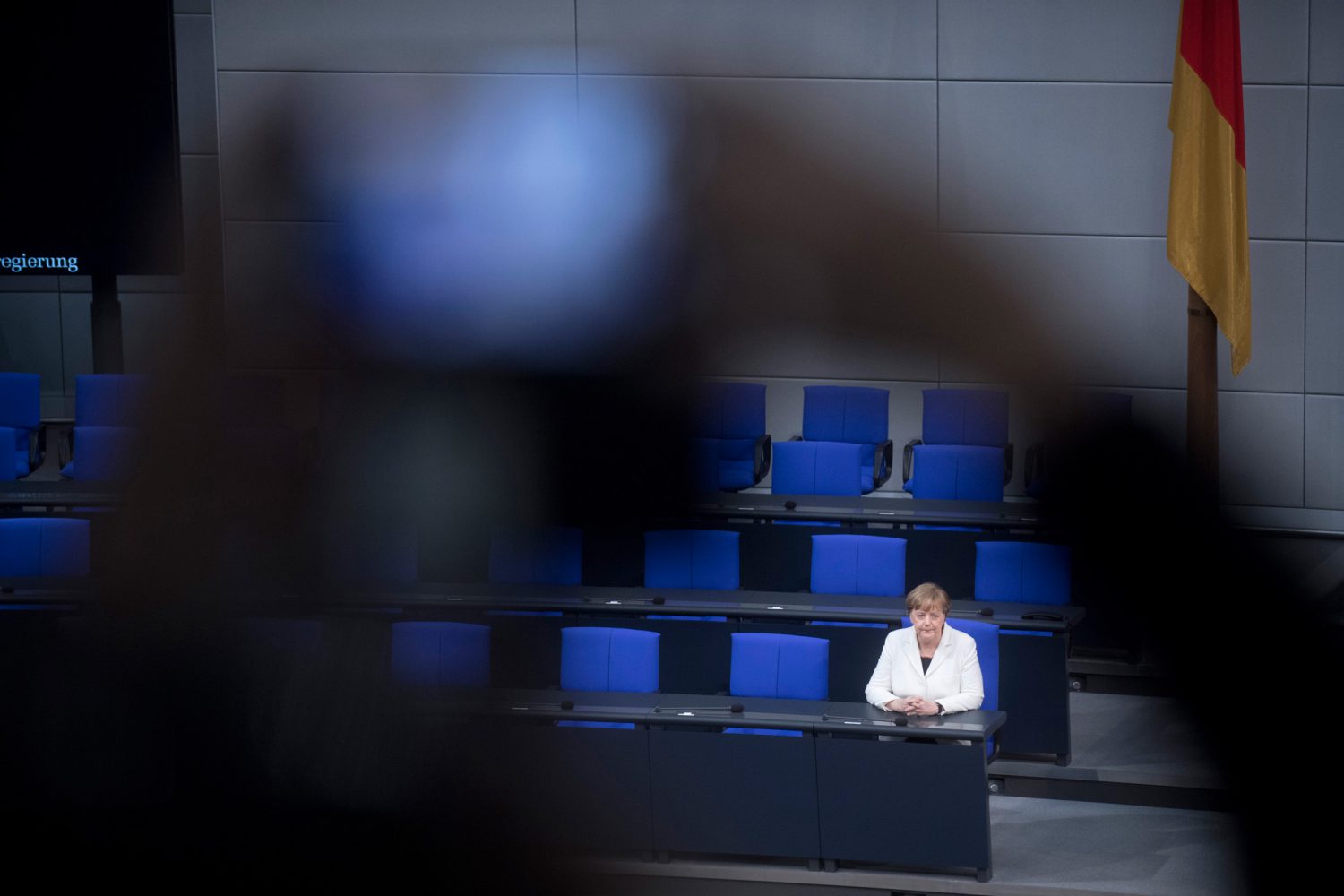 Angela Merkel in Parliament after taking the oath for her fourth term in 2018.
Angela Merkel in Parliament after taking the oath for her fourth term in 2018.
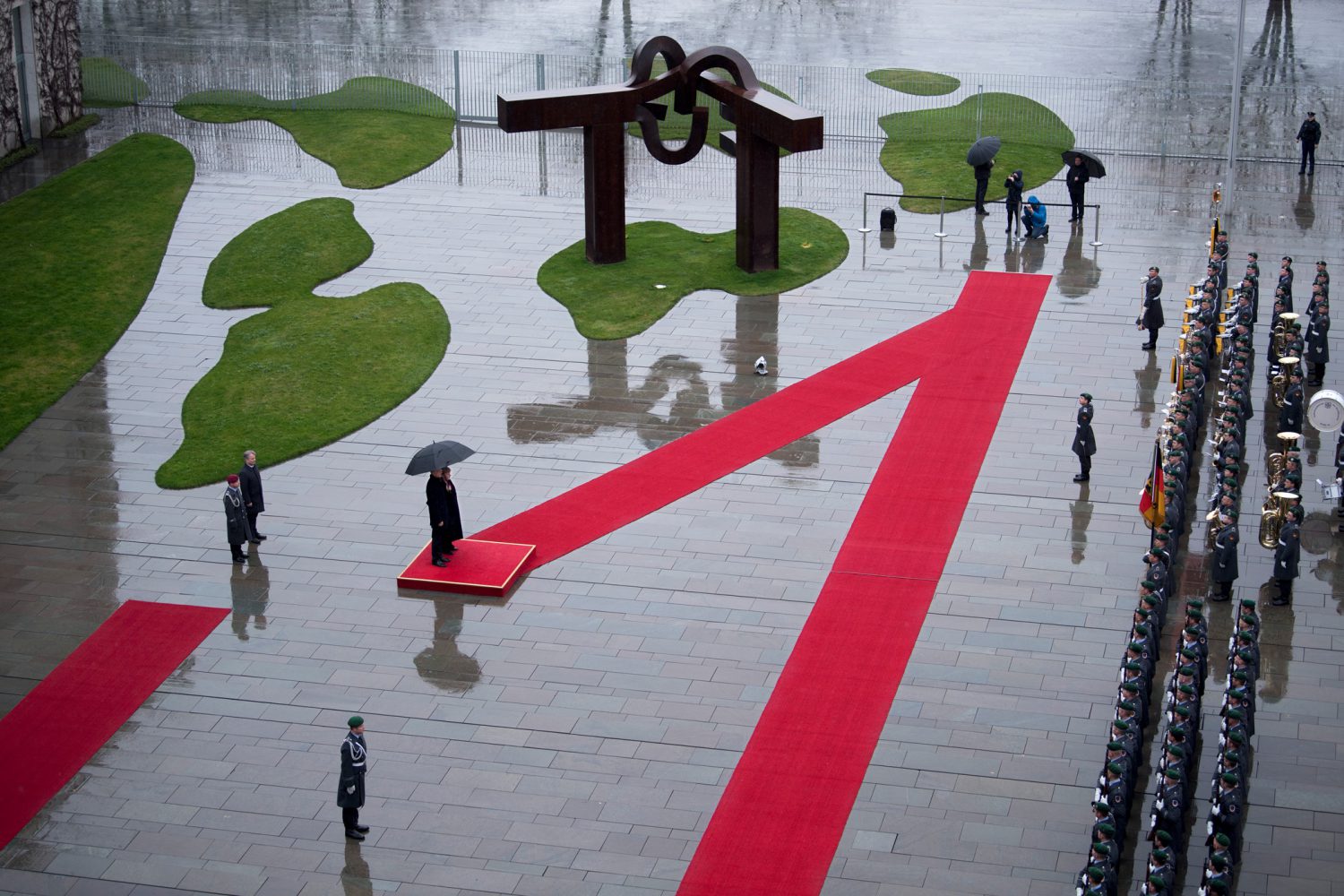 Welcoming the Prime Minister of Latvia, Krisjanis Karins, in 2019.
Welcoming the Prime Minister of Latvia, Krisjanis Karins, in 2019.
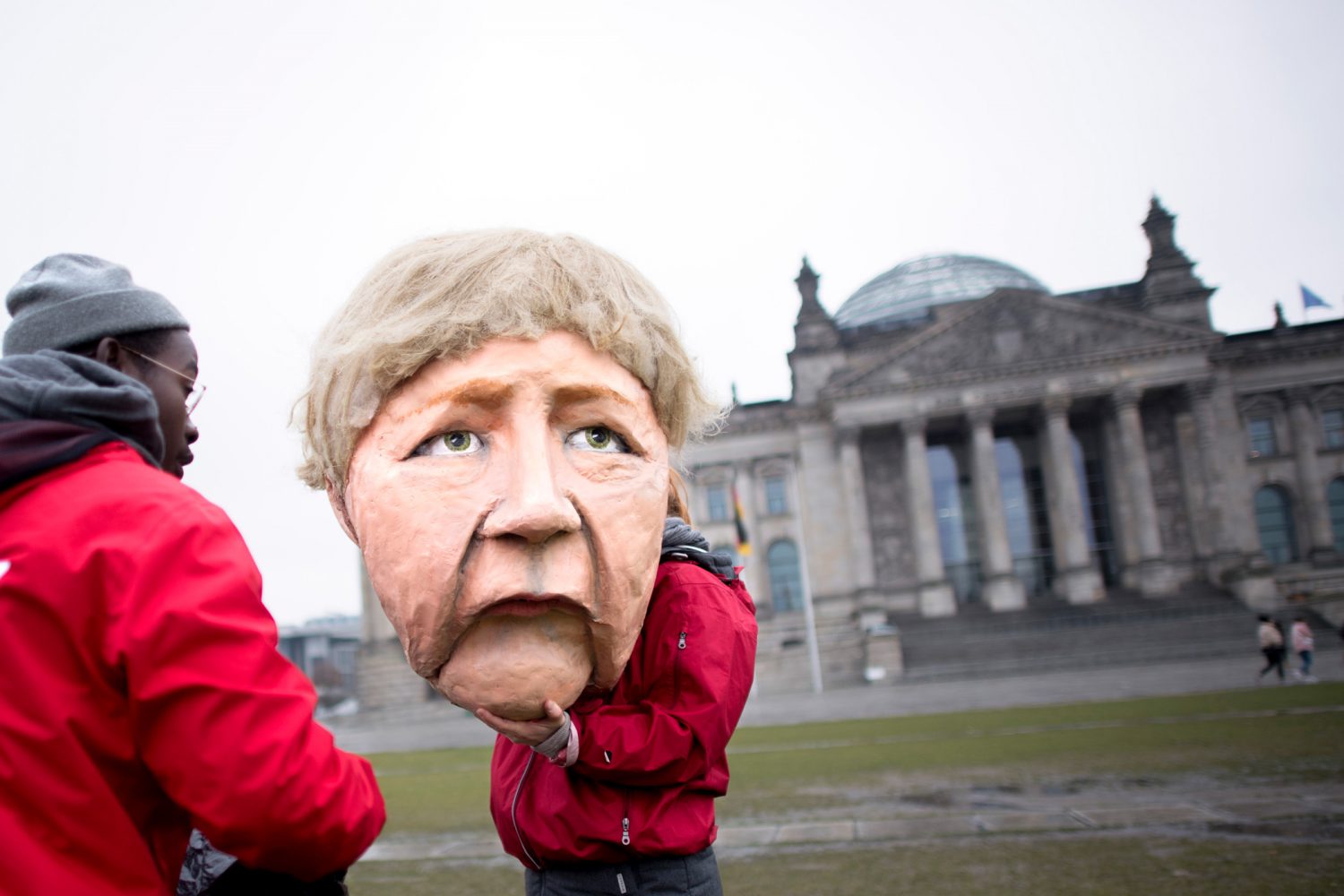 Environmental demonstrators carrying a papiermache mask of Chancellor Merkel in front of the Reichstag. 2020.
Environmental demonstrators carrying a papiermache mask of Chancellor Merkel in front of the Reichstag. 2020.
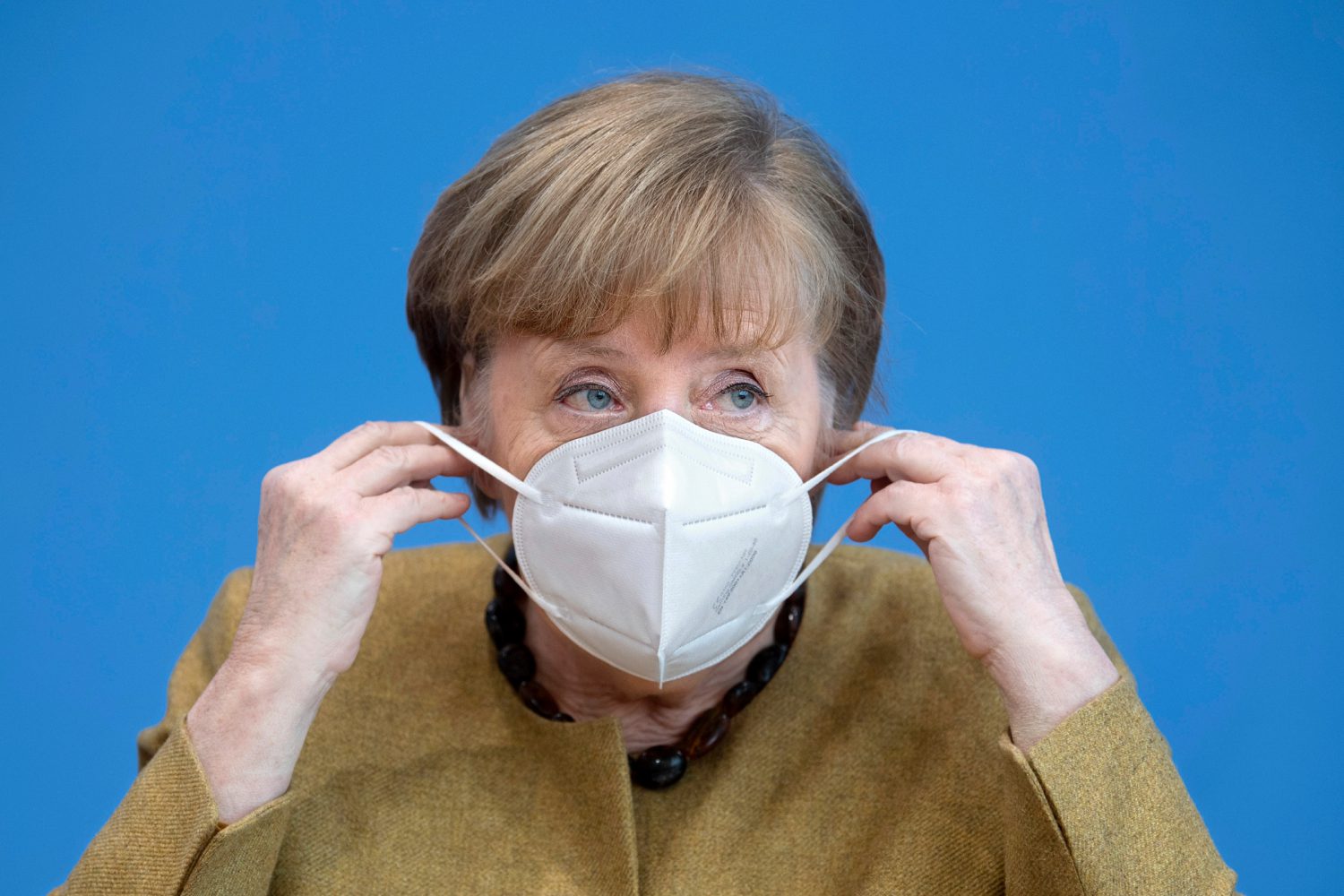 Wearing a facemask at a national press conference, 2021.
Wearing a facemask at a national press conference, 2021.
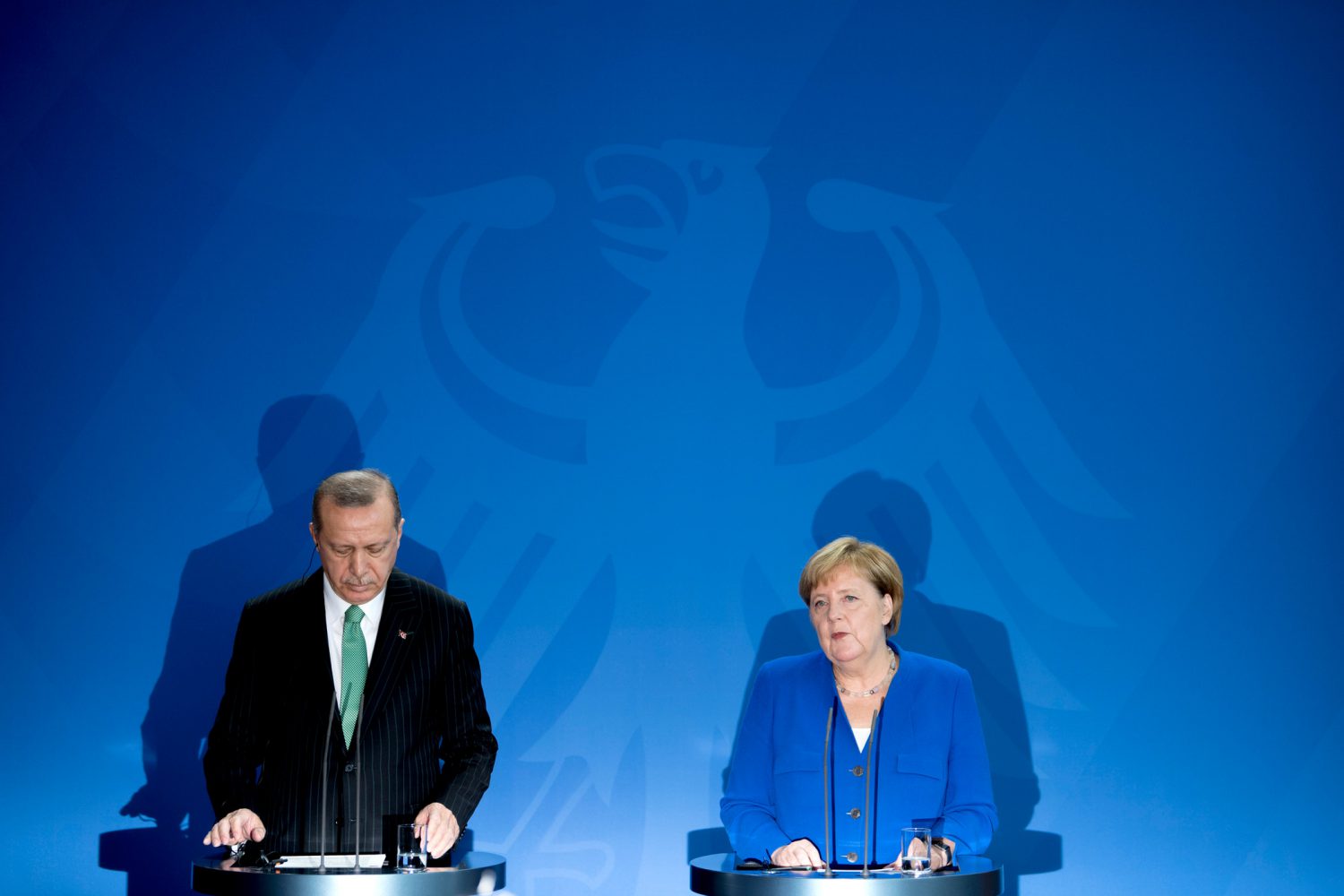 With Recep Tayyip Erdogan in Berlin, 2018.
With Recep Tayyip Erdogan in Berlin, 2018.
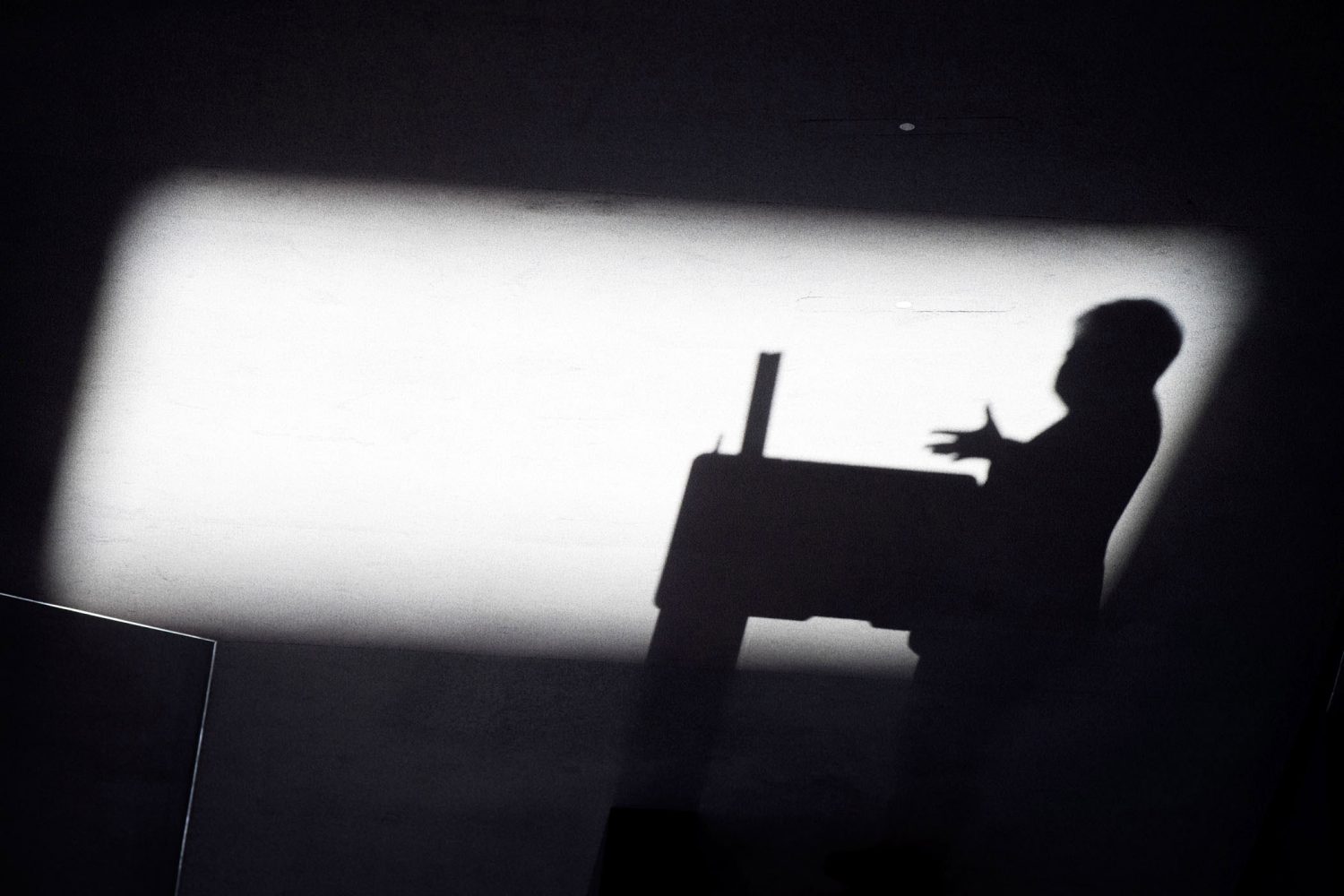 Casting a shadow at parliament discussing “Brexit”, 2018.
Casting a shadow at parliament discussing “Brexit”, 2018.
